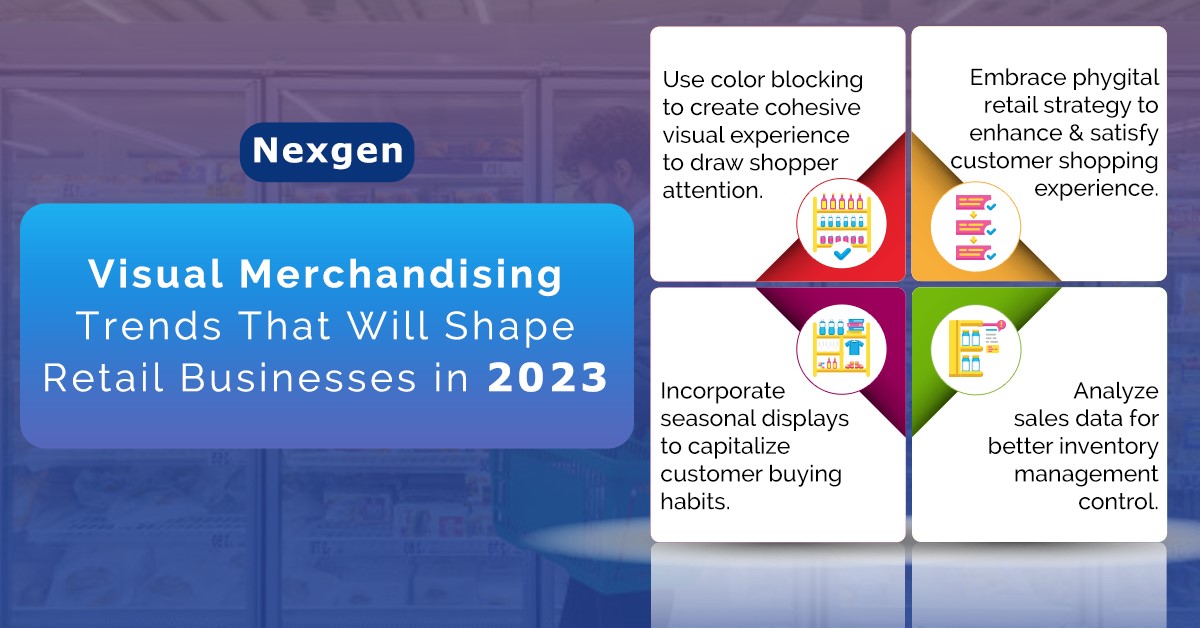2022 has been a transformative year in retail, and a changing retail landscape means retailers need to step up their strategies if they want to thrive in 2023. The year 2022 is sure to be the comeback year for brick-and-mortar stores, despite the aftermath of Covid-19. In the U.S. alone, retailers have opened twice as many stores as they closed.
According to reports, 75% of shoppers have adopted a new shopping behavior during the pandemic, switching from online to physical stores. With the changes in market trends and consumer behavior, modern-day shoppers have developed a new set of expectations, and retailers must carefully consider every corner of their store space, so they can strategize accordingly. The most effective way to do this is with visually appealing in-store displays. Once shoppers enter the store, they view, touch, and interact with products they consider purchasing. Most stores find it difficult to showcase the right products on shelves, and to build an engaging in-store experience to drive customer attention to the store. So, how can you captivate shoppers and design an enticing shopping experience, so they feel compelled to buy it? The solution is visual merchandising planograms.
Planograms are visual merchandising tools, that aid retailers in shelf planning and execution to help shoppers better visualize products on shelves. This helps retailers display products on shelves and organize stores to drive sales, enhance their brand image, and provide a stimulating and enjoyable experience for shoppers. In this blog, we will share with you the top five planogram retail trends that you should focus on and incorporate into your growth strategy to boost sales:

- Create an engaging visual experience using color: A uniform color palette can help create a cohesive visual experience in your store and make it easier to draw attention to certain elements of your space. Selecting a color palette is the first step. You can limit the number of colors to create a harmonious visual experience for your shoppers. Typically, you can work with three to four hues at a time, with variations within each color. The palette should match your brand. For example, if you are a pet supply store, and you want your brand to be environmentally friendly and evoke images of nature, you might want to stick with earth tones and green, as these hues elicit associations with nature and comfort. You can use good lighting to match the color palette and draw attention to the products to entice shoppers.
- Sell custom or private label products: Having products that customers could not get anywhere else is an essential step in boosting brand loyalty and recognition, and can be a sales generator for your store, whether you are producing a patented concept or developing a private label line. Selling private label products is much easier than creating a custom product that offers most of the same benefits. Private label items are manufactured by a supplier but sold under your brand name. These products are popular for skincare, groceries, kitchen and even electronics. When people use products with your brand name, it will remind them of your store every time. For example, most grocery stores have their own frozen label food items to encourage shoppers to make purchases.
- Develop a phygital planogram strategy: Retailers can embrace digital technology in their physical stores and online storefronts to sell their products using visual merchandising strategies. This will help shoppers make purchases as they wish. For example, if a customer is looking for a gadget, he will browse the item on your online store, and later decide to purchase it from your nearby store to have a real in-store shopping experience. When they visit your store, you can encourage them to make additional purchases by cross-merchandising items together or placing best-selling items on shelves. This phygital retail strategy is convenient and enhances the shopping experience and satisfaction for customers.
- Place seasonal displays to connect with shoppers: When considering your visual merchandising, seasonal factors should play a role. Ensure that your store merchandising correlates with what shoppers are experiencing, be it a holiday or the weather, it must be relevant to your audience. Seasonal displays can take many forms, including POP displays and focal points to window displays. You can incorporate timely merchandising into your store to capitalize on seasonal emotions and buying habits. For example, the products displayed on window displays during the New Year and Valentine’s Day are not the same.
- Get a closer look at your sales data:Last but not least, analyzing your sales data is very important since it reveals which product category is resulting in more profits. This helps you restock shelves before the product runs out of stock. This will also help you understand the best-selling products that you should be cross-merchandising with poor-performing items to boost sales.
Overview of Nexgen POG
Nexgen POG is a robust and user-friendly cloud-based visual merchandising tool. It is designed for quick and efficient planogramming with minimal effort. Planogram in retail can be designed by easily dragging and dropping the products. The multi-device compatibility feature of POG allows you to obtain, share and edit planogram on any device, including your phone. It helps in designing store-specific planograms for increased product visibility and sales.
Get Your Free Trial Now!